Rollei A110: the smallest gnome
In 1974, visitors to the Photokina exhibition in Cologne mobbed the stand of the Rollei company in crowds. There is nothing surprising in this, since it was there that was shown, as stated, “the smallest pocket camera in the world!” - Rollei A110.
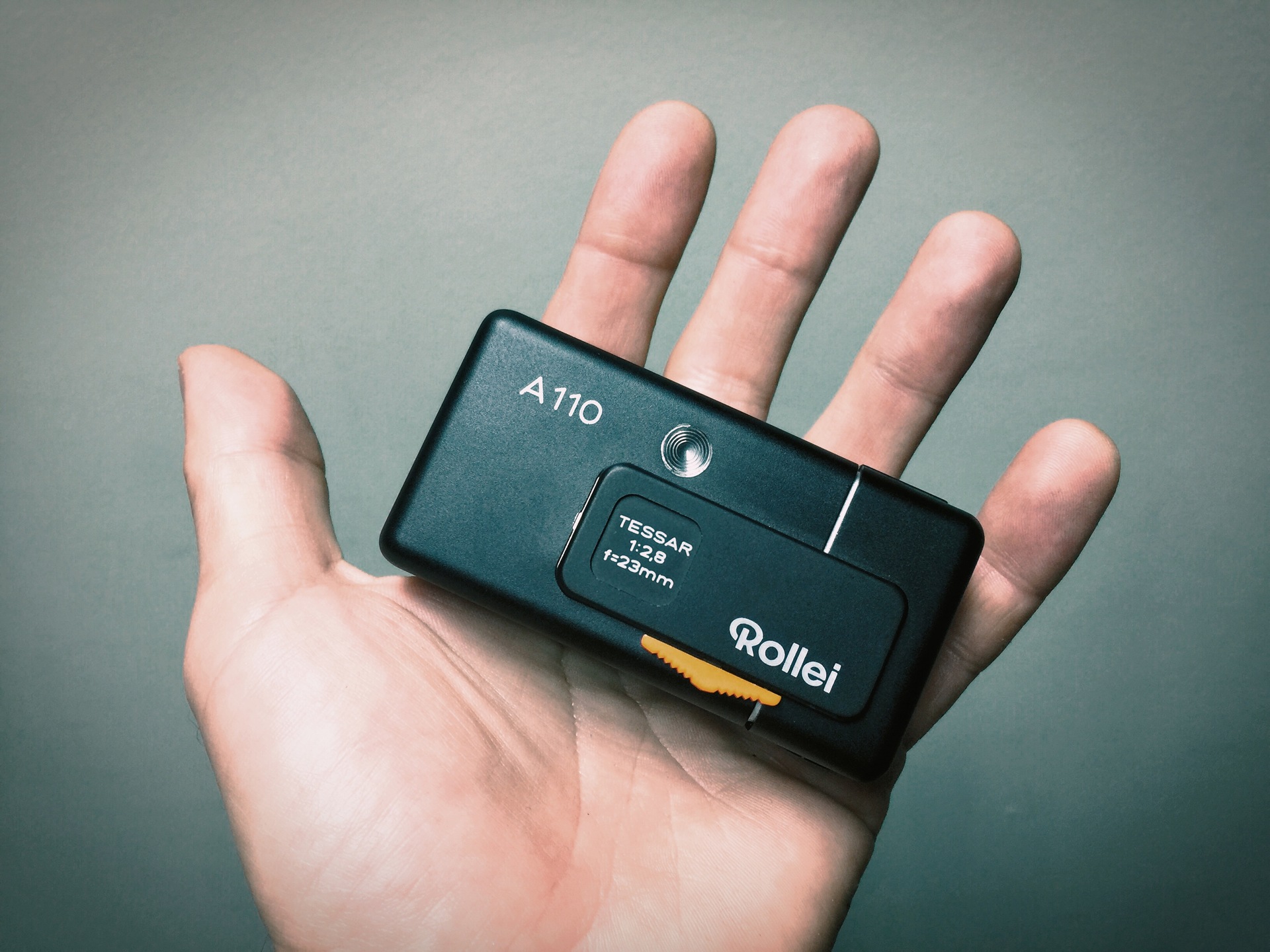
In fact, to put it mildly, this is not quite true. In the world of film cameras, smaller models also existed, and we will not recall the current digital ones. Nevertheless, the excitement really was, and well deserved: the camera turned out - lovely sight.
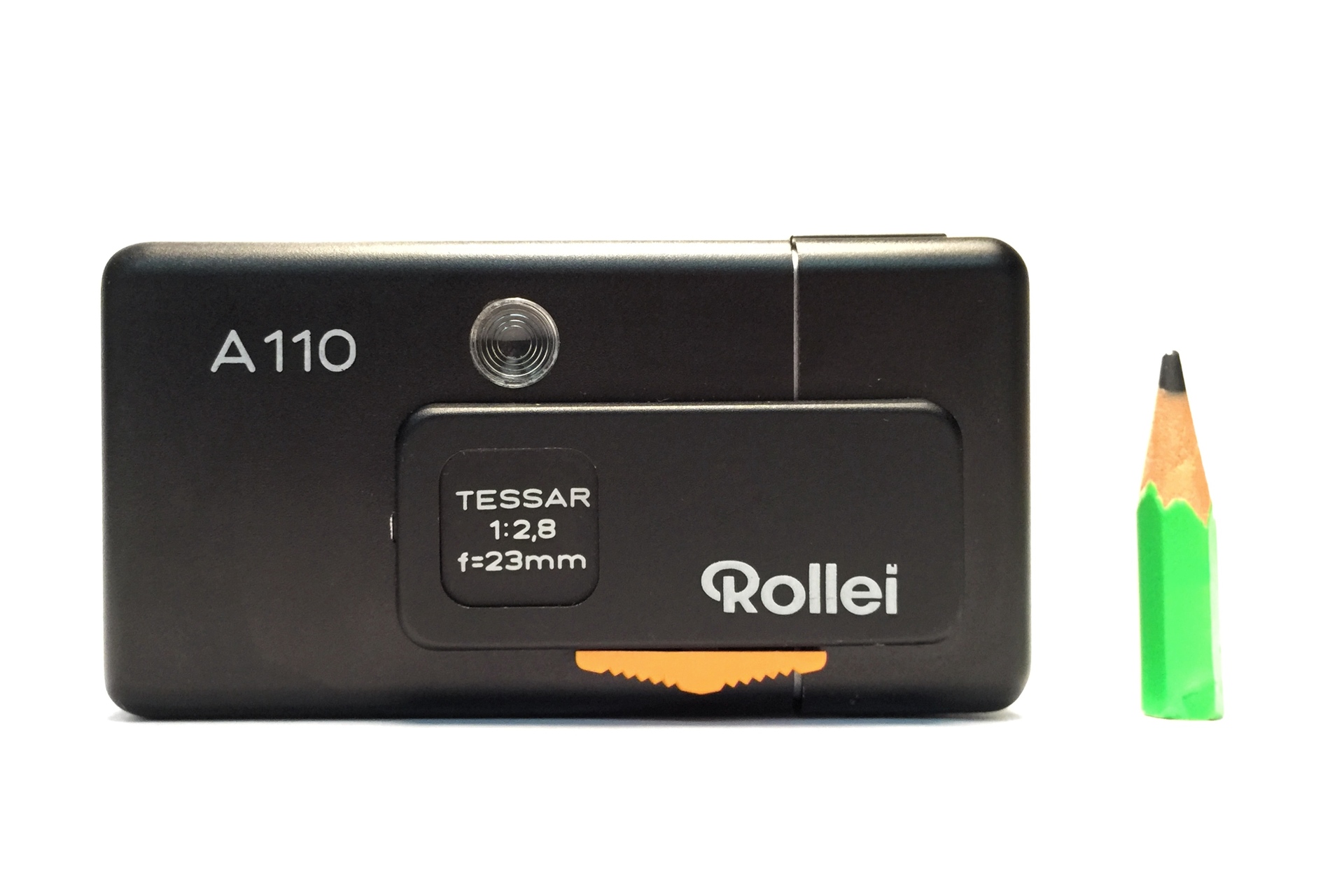
Rollei A110 filmed 110 format film, the production of which was launched just two years before the exhibition. It was a 16 mm wide film wrapped in two-piece non-separable cassettes. The format quickly gained popularity, since ordinary users liked the compactness and simplicity of charging such cameras: I opened the lid, inserted the cassette, closed it — you can remove it. After shooting, you do not need to rewind the film back: took out the cassette - passed into the development.
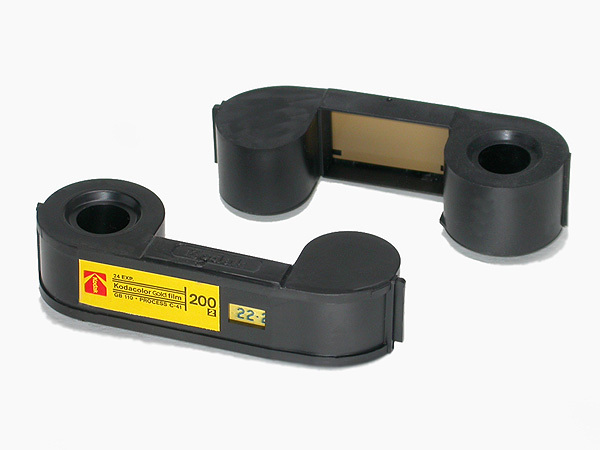
')
Manufacturers tried with might and main and produced a variety of pocket cameras, the main drawback of which was, oddly enough, size. It was proposed to insert five-centimetric cassettes, for example, in the size of an eyeglass case into a Kodak Pocket Instamatic:
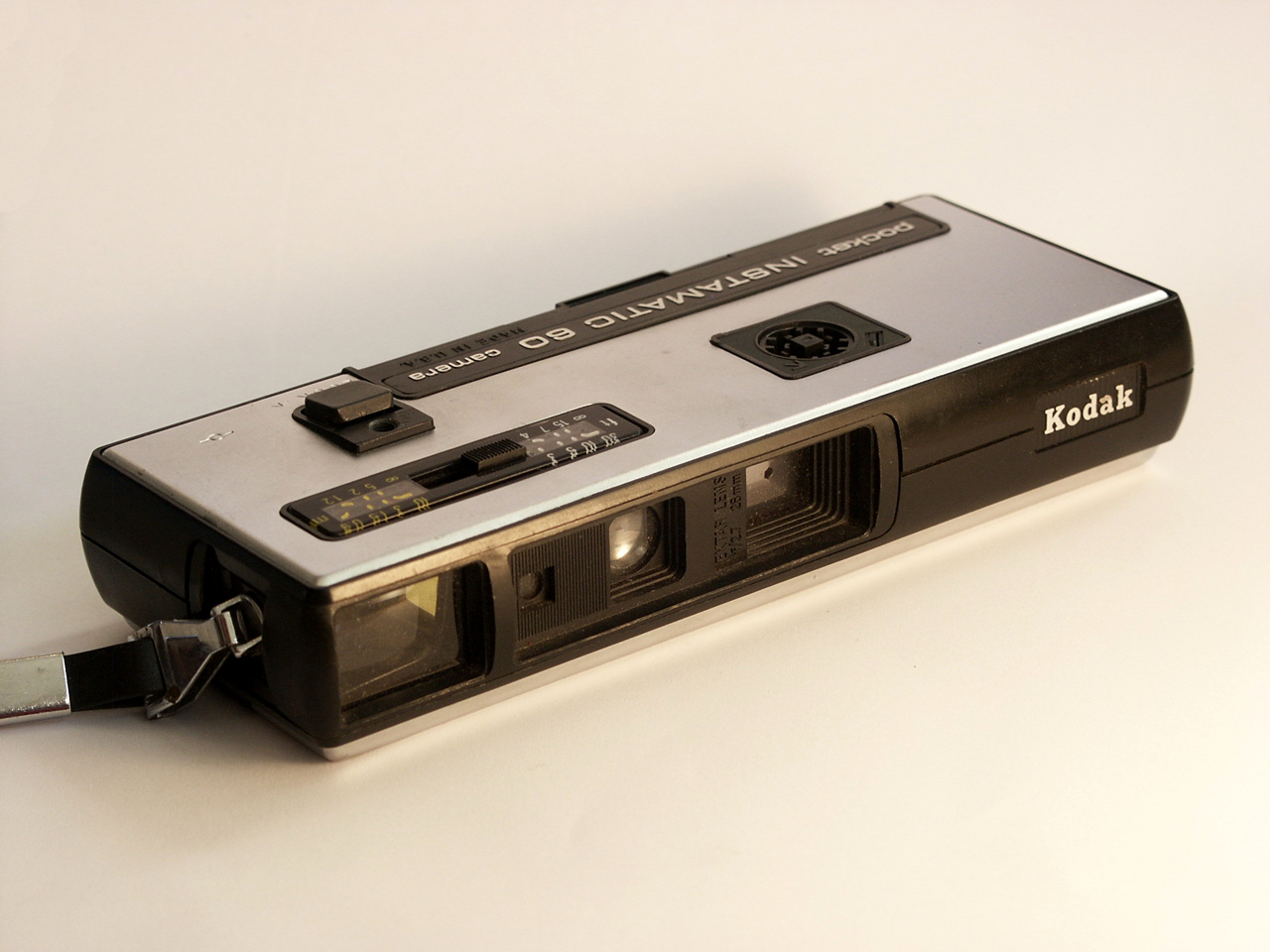
And later - in a beautiful, unusual, but still very cumbersome Minolta 110 Zoom:
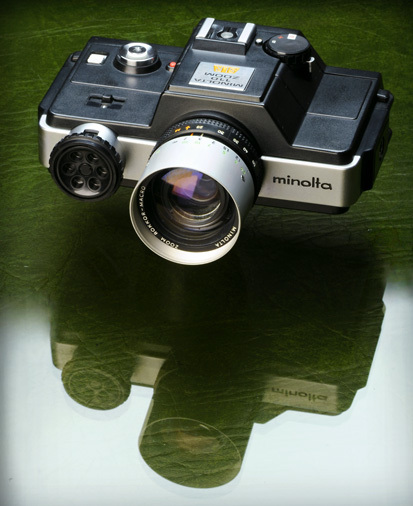
Compared to the other, the Rollei A110 looked tiny. The size 84 × 44 × 30 mm (in the closed state) was a real competitive advantage, it was the focus on the advertising campaign of the camera.
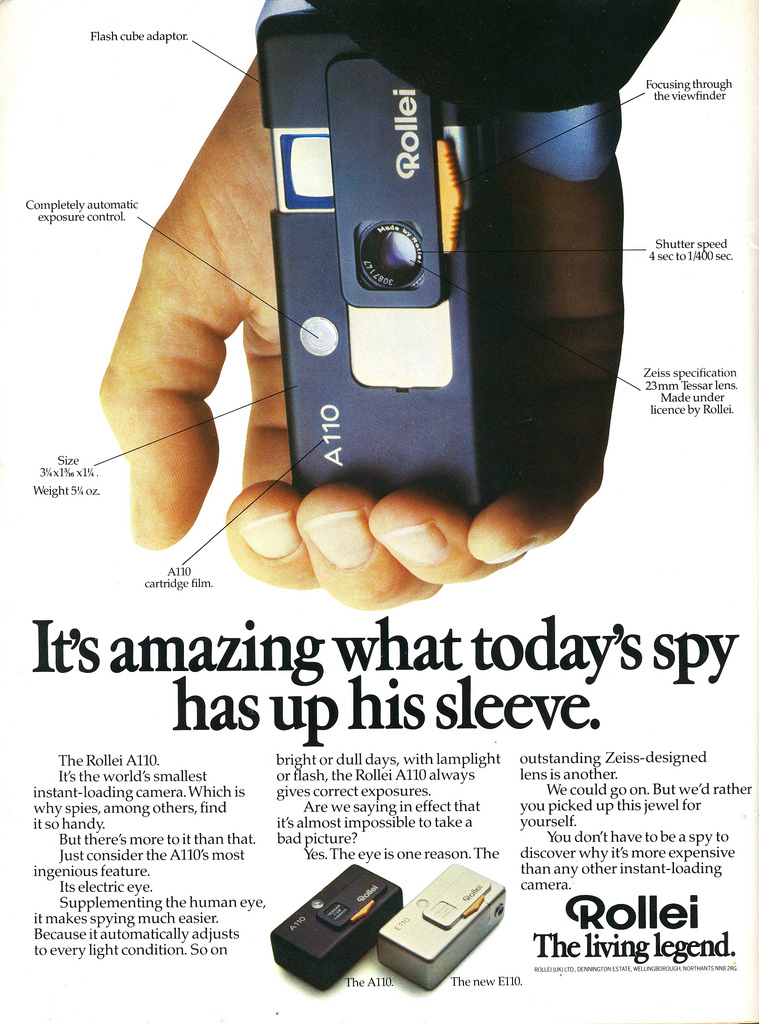
A little more technical characteristics of the baby:
Lens: Rollei Tessar 1: 2.8 / 23mm
Shutter: electronic, photodiode controlled, shutter speed range from 1/400 to 4 seconds
Weight: 185 gr. with battery
Upon learning of the existence of such a miracle of engineering, I rushed to wool online auctions and, after bargaining a little, I bought it. "Movie" came almost fully loaded. There was not only a block for flash, in which you need to insert disposable "cubes". But I prefer to shoot with natural light, so I was not upset.
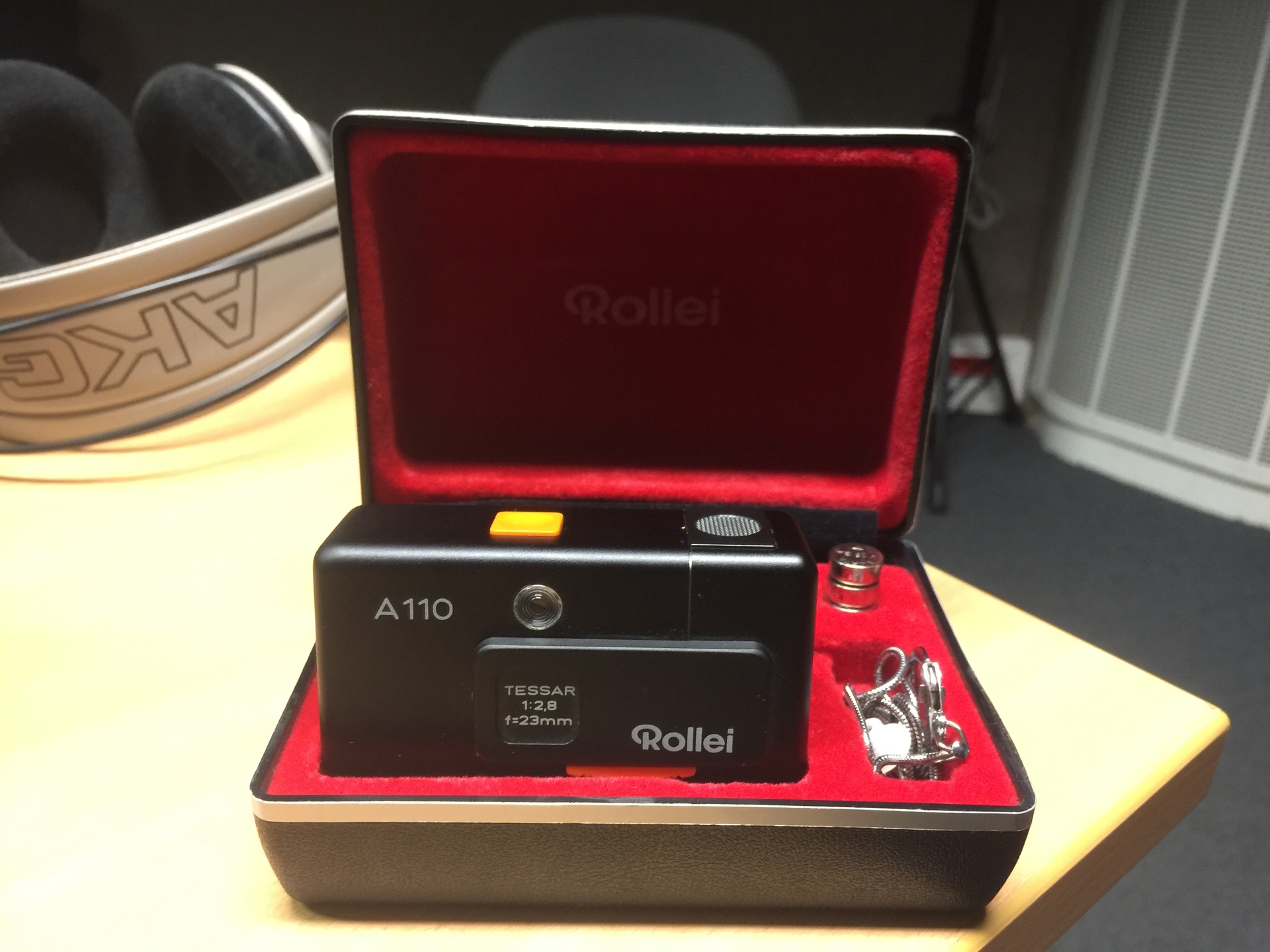
The first thing that had to be done was to discard the long-dead battery. It was about the size of half AAA and the voltage of 5.4 volts. Such no longer produce. I had to replace it with four suitable-sized watch "pills", folded in a column and glued with electrical tape. Together, they produce 6 volts, which, of course, affects the work of the exposure meter, but the film is so good that its huge photo-breadth forgives even serious errors in the exposure. Looking ahead, I’ll say that the increased battery voltage didn’t affect the results at all.
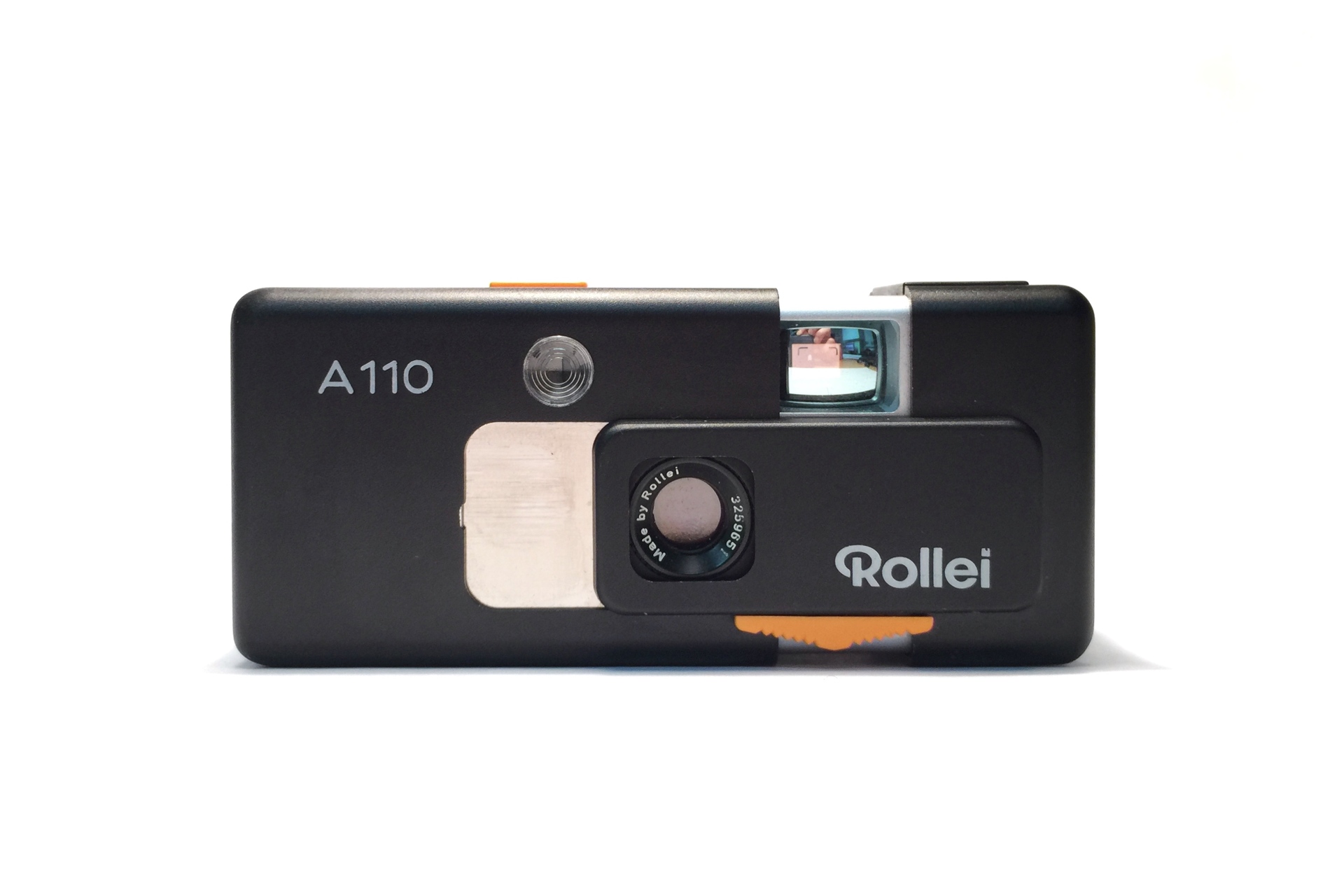
Testing has shown that, contrary to the assurances of the manufacturer, the appliance is able to work out the shutter speed even at 10 or even 15 seconds if removed, say, at night. True, all this is determined solely by intuition: the user cannot in any way see or affect the exposure pair — a full automaton. All that is available to the photographer is the ability to check the exposure before shooting by pressing a special button. If the signal LED lights up, then there is a danger of “moving” and you need to somehow fix the camera, for example, on a tripod.
Focusing on the device - on a scale. Looking into the viewfinder (good, it should be noted, quite light), you can see the symbolic scale - “portrait”, “full height”, “landscape”. Moving the orange slider under the lens, you can change the focus.
Very interesting arranged at the "roller" shutter. In the cocked position, it is open and the diaphragm is closed . At the moment of shooting, the diaphragm is first opened - to the value determined by the exposure meter - and then, after the same time measured by it, the shutter closes. Cocking mechanism restores the original position.
The device is pleasant to the touch, well done, heavy as metal. In the closed position, both the lens and the viewfinder are protected, which allows you to carry the “roller” in your pocket without any problems. Arming - as in "Kiev-30": spread the camera, took off, closed back.

Well, now the film. In the above-mentioned photographic circumstances, I have regularly replenished stocks of film 16 mm wide. There are no problems with this. But there are others: as I mentioned, 110 format cassettes are disposable, non-separable. And by the way, they still need to get! Overdue film is quite possible to buy on the Internet, but the result on it will be, at best, mediocre, and at worst (as I did) - no. I bought two Kodak Gold cassettes with a delay of 17 years, and, after filming one, I received a picture worthy of Malevich's brush: a uniform blackness over the entire length. Here is this film:

By the way, here you can see that Rollei A110 is smaller in size than a cardboard box of film for it!
In general, active Internet surfing has shown that no one has been releasing a 110 format film for a long time (who would doubt). Lomography was the last of the Mohicans, but it also rolled out production a few years ago. There was no demand for the tape at all. Timid attempts to parasitize hipsters have come to nothing. Even the release of various “lomographic” apparatiks — essentially plastic toys with plastic lenses — could not lift format 110 from the grave.
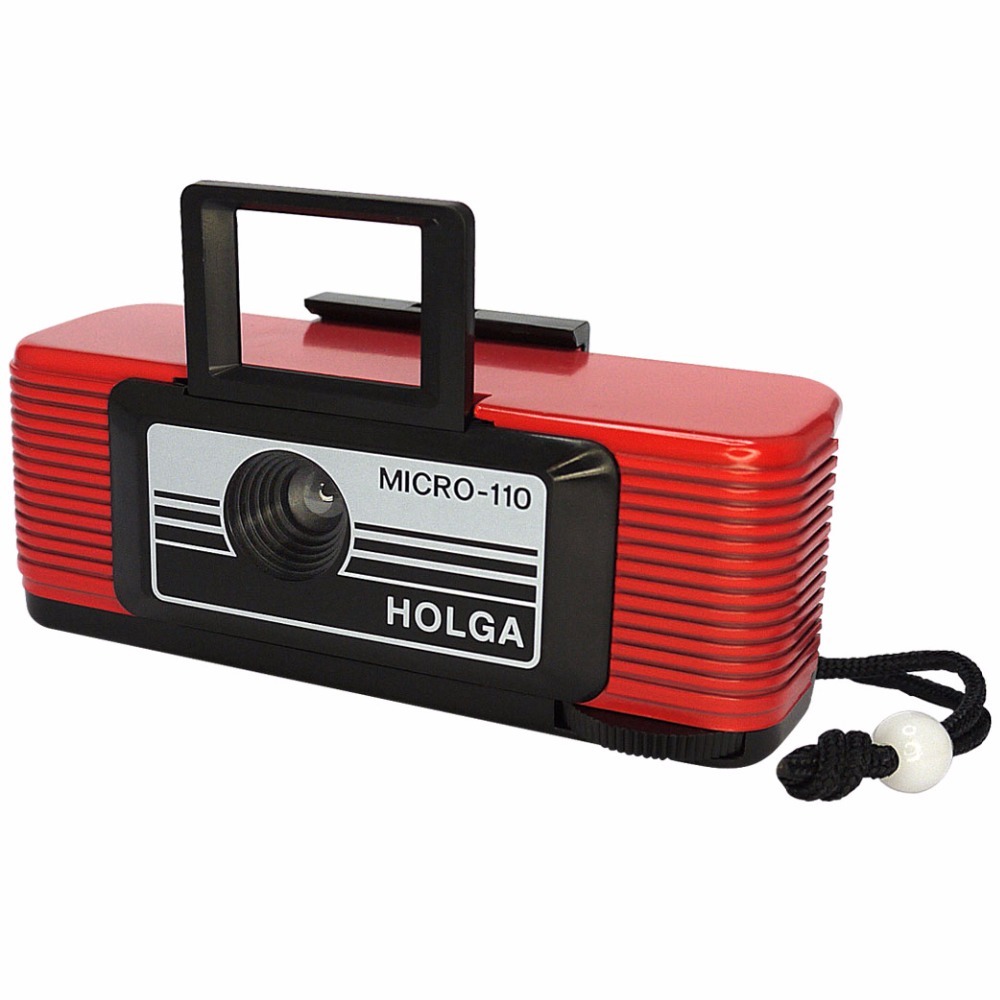
But the unclaimed film is still found in stores! Finding one such, I bought out the entire supply (6 cassettes) of Lomography Tiger 200 film, which was overdue by three years, but was still stored mostly in the refrigerator. I filmed one video, gently pulled the film out of the cassette and handed it over to the developer. Oh, miracle! Is there a result!

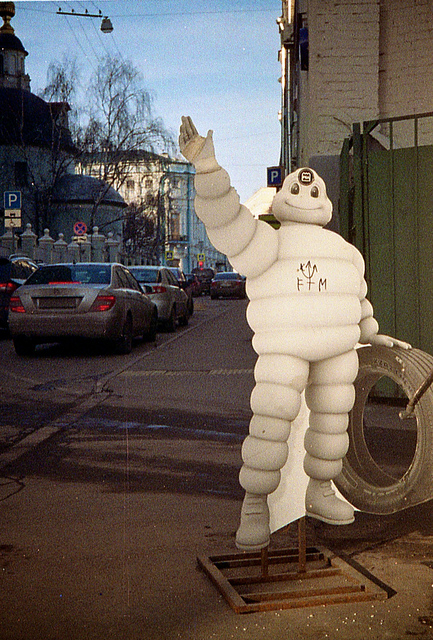


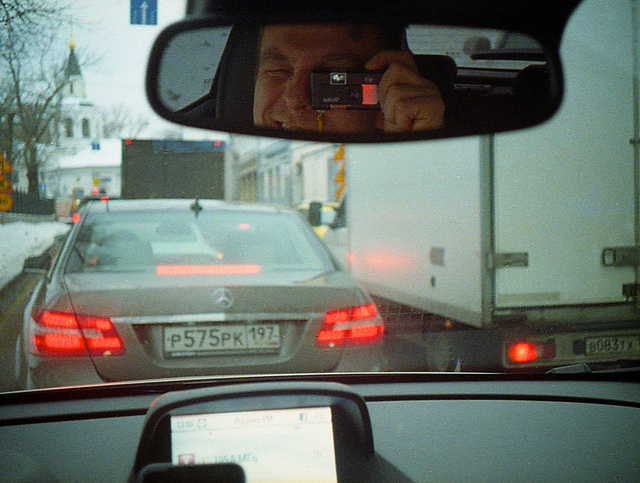
Unfortunately, there was not very much sun during the testing period, but for a lomographic film the result is quite good. It remains to try the fresh film. First you need to disassemble the very non-folding cassette. Internet forums advise you to carry out the operation as carefully as possible so as not to break the thin plastic and not to pierce your finger with a screwdriver or a knife. I did it all; harvested iodine had to be put back in the locker.
Here the photo is not mine, but the result here shows the correct one: the disassembled cassette, the receiving coil and the old film:
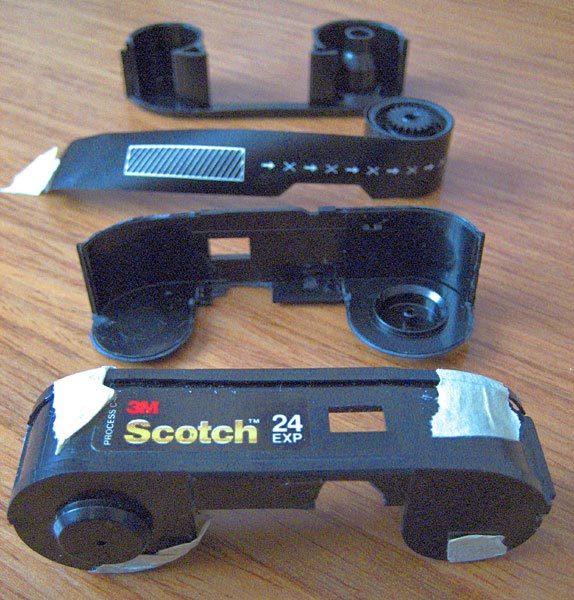
Next you need to take a fresh film and twist it into a roll together with a leader tape - a strip of opaque paper, on the reverse side of which frame numbers are printed. These figures are visible through the window in the cassette and the corresponding window in the camera. The roll is placed in the feed “jar”, the leader tape is pulled into the receiver and fastened on a plastic reel with a tape of tape. Having closed the cassette, we fasten it with the same scotch tape so that it does not accidentally open.
There are people who cut a wide 120 film, getting as many as three 16 mm tapes. By the way, this photo shows that the man still broke one tape at the opening:
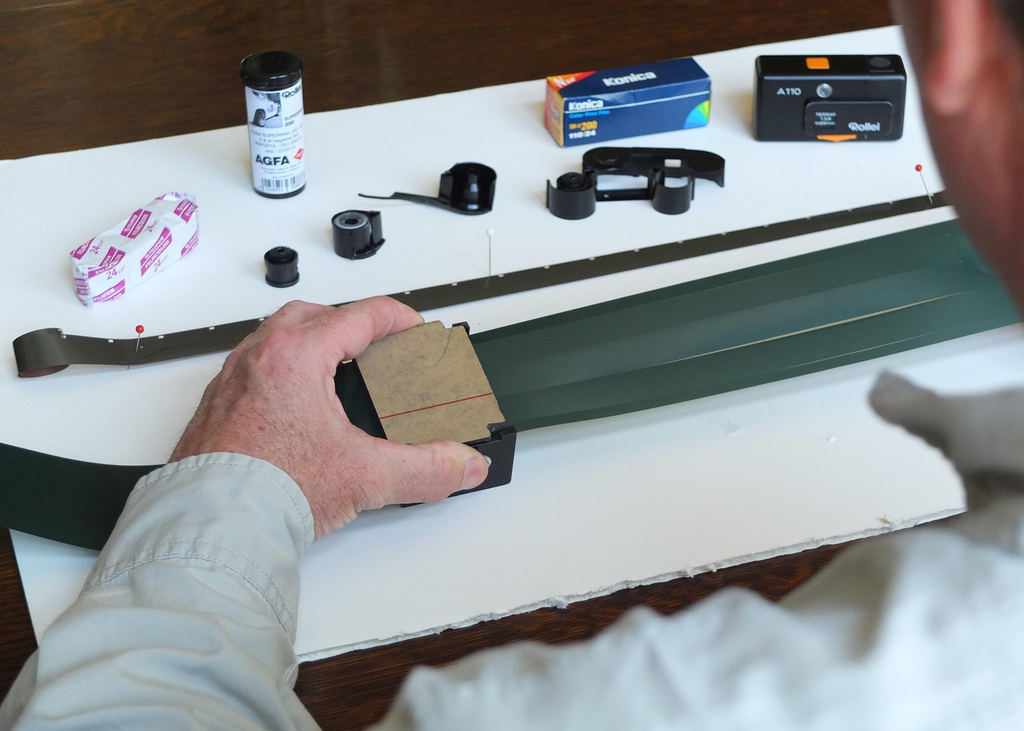
I took out a pair of Ilford Delta 400 scraps from my inventory, loaded it into Roller, filmed it and showed it. For the development, I had to buy a Soviet tank with a 16 mm helix on Avito. It cost me 400 rubles, and the price was too high, since the production tank in 1985 was brand new - in intact packaging. A few pictures:
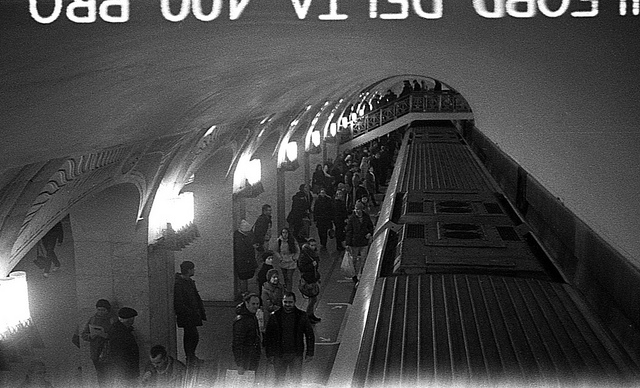
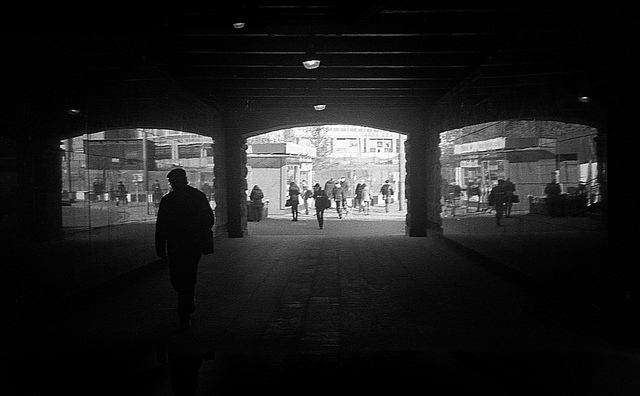

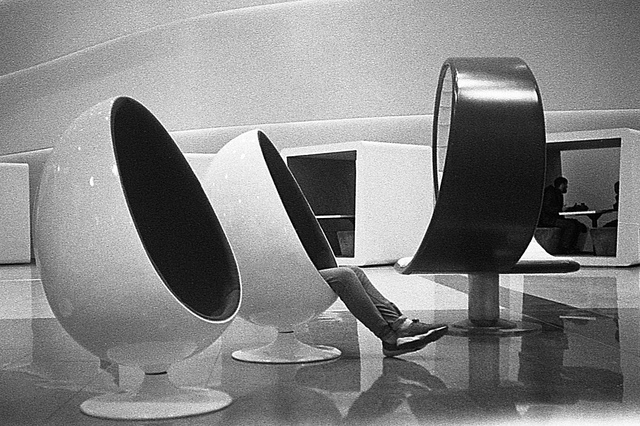
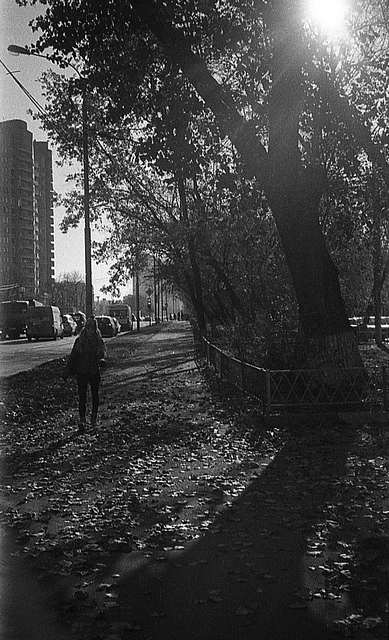
The film is grainy, yet the sensitivity is 400 ISO, and the frame is 13x17 mm. Yes, and I lit it up a bit when trimming-charging. But I like the result. The next test subject will be the beloved Kodak Portra 160, just wait for at least some sun and at least some color in the surrounding space.
In the process of googling, it suddenly turned out that the world has the world's smallest SLR (!) 110 format film camera with interchangeable lenses - this is the Pentax Auto 110.
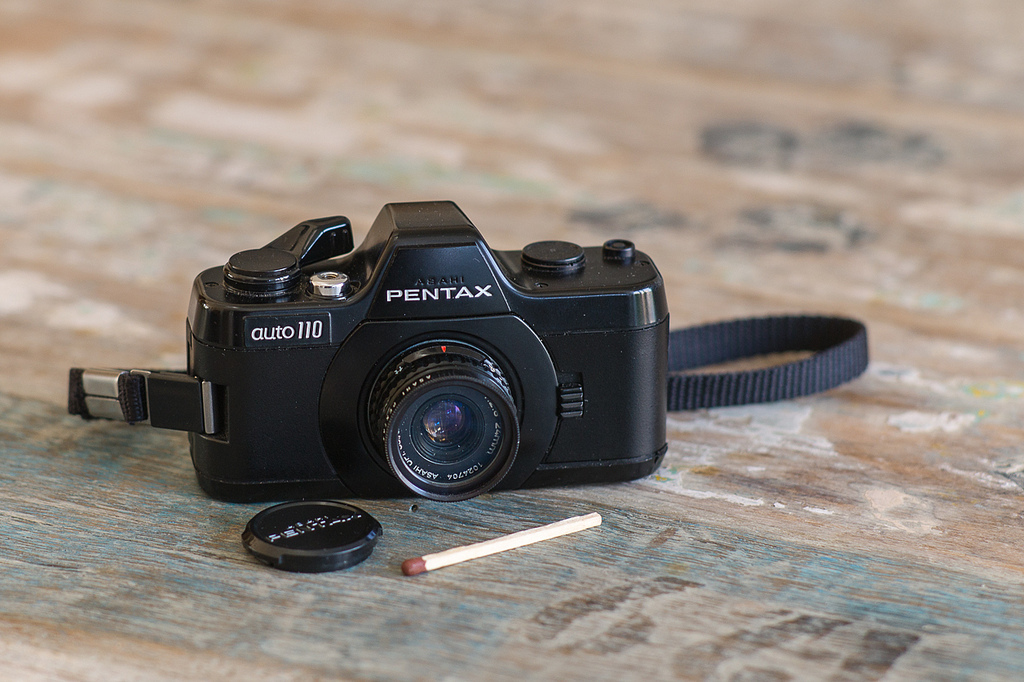
Well, what to do, I bought it. But this (according to the established tradition) is a completely different story ...
In fact, to put it mildly, this is not quite true. In the world of film cameras, smaller models also existed, and we will not recall the current digital ones. Nevertheless, the excitement really was, and well deserved: the camera turned out - lovely sight.

Rollei A110 filmed 110 format film, the production of which was launched just two years before the exhibition. It was a 16 mm wide film wrapped in two-piece non-separable cassettes. The format quickly gained popularity, since ordinary users liked the compactness and simplicity of charging such cameras: I opened the lid, inserted the cassette, closed it — you can remove it. After shooting, you do not need to rewind the film back: took out the cassette - passed into the development.

')
Manufacturers tried with might and main and produced a variety of pocket cameras, the main drawback of which was, oddly enough, size. It was proposed to insert five-centimetric cassettes, for example, in the size of an eyeglass case into a Kodak Pocket Instamatic:

And later - in a beautiful, unusual, but still very cumbersome Minolta 110 Zoom:

Compared to the other, the Rollei A110 looked tiny. The size 84 × 44 × 30 mm (in the closed state) was a real competitive advantage, it was the focus on the advertising campaign of the camera.

A little more technical characteristics of the baby:
Lens: Rollei Tessar 1: 2.8 / 23mm
Shutter: electronic, photodiode controlled, shutter speed range from 1/400 to 4 seconds
Weight: 185 gr. with battery
Upon learning of the existence of such a miracle of engineering, I rushed to wool online auctions and, after bargaining a little, I bought it. "Movie" came almost fully loaded. There was not only a block for flash, in which you need to insert disposable "cubes". But I prefer to shoot with natural light, so I was not upset.
The first thing that had to be done was to discard the long-dead battery. It was about the size of half AAA and the voltage of 5.4 volts. Such no longer produce. I had to replace it with four suitable-sized watch "pills", folded in a column and glued with electrical tape. Together, they produce 6 volts, which, of course, affects the work of the exposure meter, but the film is so good that its huge photo-breadth forgives even serious errors in the exposure. Looking ahead, I’ll say that the increased battery voltage didn’t affect the results at all.

Testing has shown that, contrary to the assurances of the manufacturer, the appliance is able to work out the shutter speed even at 10 or even 15 seconds if removed, say, at night. True, all this is determined solely by intuition: the user cannot in any way see or affect the exposure pair — a full automaton. All that is available to the photographer is the ability to check the exposure before shooting by pressing a special button. If the signal LED lights up, then there is a danger of “moving” and you need to somehow fix the camera, for example, on a tripod.
Focusing on the device - on a scale. Looking into the viewfinder (good, it should be noted, quite light), you can see the symbolic scale - “portrait”, “full height”, “landscape”. Moving the orange slider under the lens, you can change the focus.
Very interesting arranged at the "roller" shutter. In the cocked position, it is open and the diaphragm is closed . At the moment of shooting, the diaphragm is first opened - to the value determined by the exposure meter - and then, after the same time measured by it, the shutter closes. Cocking mechanism restores the original position.
The device is pleasant to the touch, well done, heavy as metal. In the closed position, both the lens and the viewfinder are protected, which allows you to carry the “roller” in your pocket without any problems. Arming - as in "Kiev-30": spread the camera, took off, closed back.

Well, now the film. In the above-mentioned photographic circumstances, I have regularly replenished stocks of film 16 mm wide. There are no problems with this. But there are others: as I mentioned, 110 format cassettes are disposable, non-separable. And by the way, they still need to get! Overdue film is quite possible to buy on the Internet, but the result on it will be, at best, mediocre, and at worst (as I did) - no. I bought two Kodak Gold cassettes with a delay of 17 years, and, after filming one, I received a picture worthy of Malevich's brush: a uniform blackness over the entire length. Here is this film:
By the way, here you can see that Rollei A110 is smaller in size than a cardboard box of film for it!
In general, active Internet surfing has shown that no one has been releasing a 110 format film for a long time (who would doubt). Lomography was the last of the Mohicans, but it also rolled out production a few years ago. There was no demand for the tape at all. Timid attempts to parasitize hipsters have come to nothing. Even the release of various “lomographic” apparatiks — essentially plastic toys with plastic lenses — could not lift format 110 from the grave.

But the unclaimed film is still found in stores! Finding one such, I bought out the entire supply (6 cassettes) of Lomography Tiger 200 film, which was overdue by three years, but was still stored mostly in the refrigerator. I filmed one video, gently pulled the film out of the cassette and handed it over to the developer. Oh, miracle! Is there a result!





Unfortunately, there was not very much sun during the testing period, but for a lomographic film the result is quite good. It remains to try the fresh film. First you need to disassemble the very non-folding cassette. Internet forums advise you to carry out the operation as carefully as possible so as not to break the thin plastic and not to pierce your finger with a screwdriver or a knife. I did it all; harvested iodine had to be put back in the locker.
Here the photo is not mine, but the result here shows the correct one: the disassembled cassette, the receiving coil and the old film:

Next you need to take a fresh film and twist it into a roll together with a leader tape - a strip of opaque paper, on the reverse side of which frame numbers are printed. These figures are visible through the window in the cassette and the corresponding window in the camera. The roll is placed in the feed “jar”, the leader tape is pulled into the receiver and fastened on a plastic reel with a tape of tape. Having closed the cassette, we fasten it with the same scotch tape so that it does not accidentally open.
There are people who cut a wide 120 film, getting as many as three 16 mm tapes. By the way, this photo shows that the man still broke one tape at the opening:

I took out a pair of Ilford Delta 400 scraps from my inventory, loaded it into Roller, filmed it and showed it. For the development, I had to buy a Soviet tank with a 16 mm helix on Avito. It cost me 400 rubles, and the price was too high, since the production tank in 1985 was brand new - in intact packaging. A few pictures:





The film is grainy, yet the sensitivity is 400 ISO, and the frame is 13x17 mm. Yes, and I lit it up a bit when trimming-charging. But I like the result. The next test subject will be the beloved Kodak Portra 160, just wait for at least some sun and at least some color in the surrounding space.
In the process of googling, it suddenly turned out that the world has the world's smallest SLR (!) 110 format film camera with interchangeable lenses - this is the Pentax Auto 110.

Well, what to do, I bought it. But this (according to the established tradition) is a completely different story ...
Source: https://habr.com/ru/post/399739/
All Articles